Hyundai i30 vs Suzuki Swift – Differences & prices compared
Compare performance, boot capacity, efficiency and price at a glance.
Find out which car is the better choice for you – Hyundai i30 or Suzuki Swift?
Costs and Efficiency:
Price and efficiency are often the first things buyers look at. Here it becomes clear which model has the long-term edge – whether at the pump, the plug, or in purchase price.
Suzuki Swift has a distinct advantage in terms of price – it starts at 17100 £, while the Hyundai i30 costs 24000 £. That’s a price difference of around 6849 £.
Fuel consumption also shows a difference: Suzuki Swift manages with 4.40 L and is therefore evident more efficient than the Hyundai i30 with 5.70 L. The difference is about 1.30 L per 100 km.
Engine and Performance:
Power, torque and acceleration say a lot about how a car feels on the road. This is where you see which model delivers more driving dynamics.
When it comes to engine power, the Hyundai i30 has a clearly edge – offering 140 HP compared to 82 HP. That’s roughly 58 HP more horsepower.
In terms of top speed, the Hyundai i30 performs to a small extent better – reaching 197 km/h, while the Suzuki Swift tops out at 170 km/h. The difference is around 27 km/h.
There’s also a difference in torque: Hyundai i30 pulls decisively stronger with 253 Nm compared to 112 Nm. That’s about 141 Nm difference.
Space and Everyday Use:
Whether family car or daily driver – which one offers more room, flexibility and comfort?
Both vehicles offer seating for 5 people.
In curb weight, Suzuki Swift is evident lighter – 1069 kg compared to 1291 kg. The difference is around 222 kg.
In terms of boot space, the Hyundai i30 offers distinct more room – 395 L compared to 265 L. That’s a difference of about 130 L.
In maximum load capacity, the Hyundai i30 performs evident better – up to 1301 L, which is about 321 L more than the Suzuki Swift.
When it comes to payload, Hyundai i30 decisively takes the win – 509 kg compared to 296 kg. That’s a difference of about 213 kg.
Who wins the race?
The Hyundai i30 proves to be wins the duel decisively and therefore becomes our DriveDuel Champion!
Hyundai i30 is the better all-rounder in this comparison.
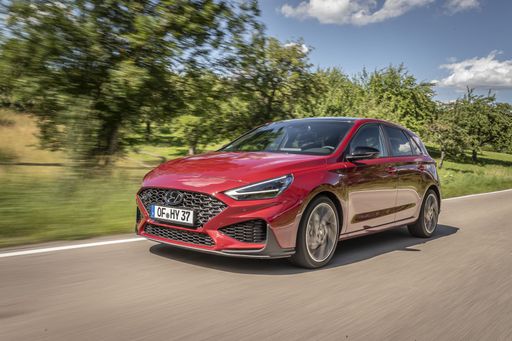 @ Hyundai Motor Company
@ Hyundai Motor Company
Hyundai i30
Hyundai i30
The Hyundai i30 proves that sensible can also be stylish, offering a confident driving character wrapped in neat, modern design. It serves up a roomy, well-equipped cabin and composed ride that make everyday motoring feel like a clever purchase rather than a compromise.
details @ Hyundai Motor Company
@ Hyundai Motor Company
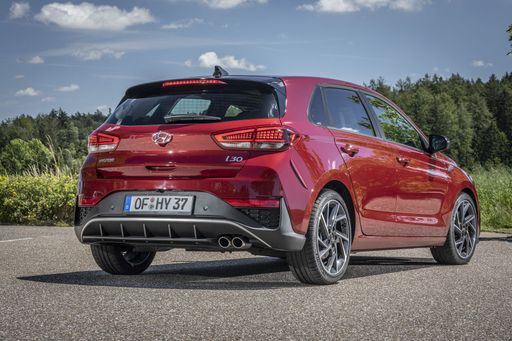 @ Hyundai Motor Company
@ Hyundai Motor Company
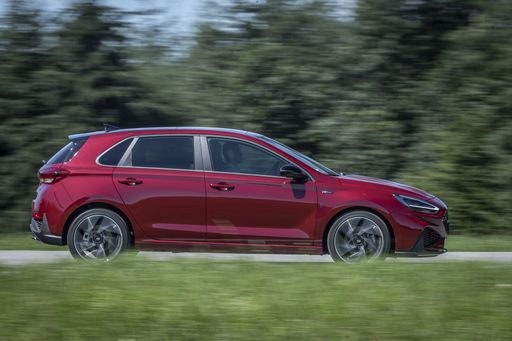 @ Hyundai Motor Company
@ Hyundai Motor Company
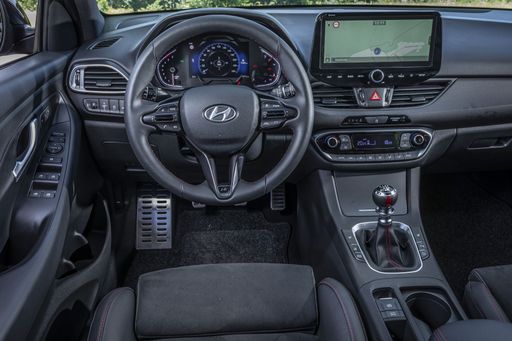 @ Hyundai Motor Company
@ Hyundai Motor Company
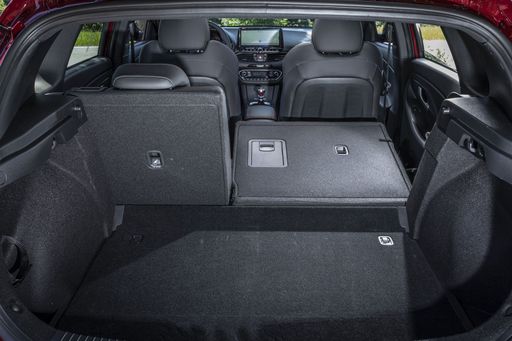 @ Hyundai Motor Company
@ Hyundai Motor Company
Suzuki Swift
The Suzuki Swift is a cheeky little hatch that turns city streets into its playground with lively handling and a grin-inducing drive. Practical enough for daily chores, thrifty to run and kinder on your wallet than many rivals, it's a sensible pick for buyers who want fun without drama.
details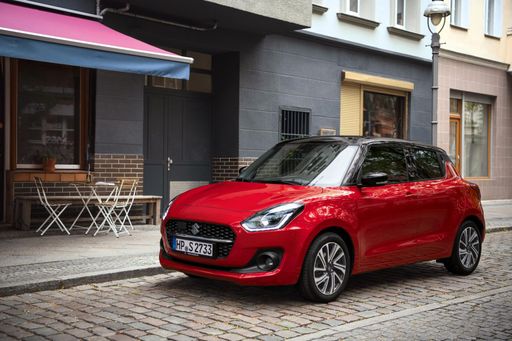 @ Suzuki Motor Corporation
@ Suzuki Motor Corporation
 @ Suzuki Motor Corporation
@ Suzuki Motor Corporation
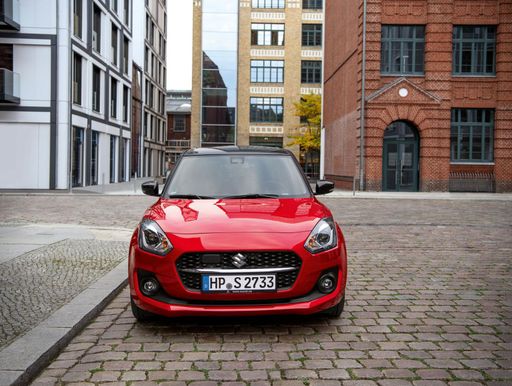 @ Suzuki Motor Corporation
@ Suzuki Motor Corporation
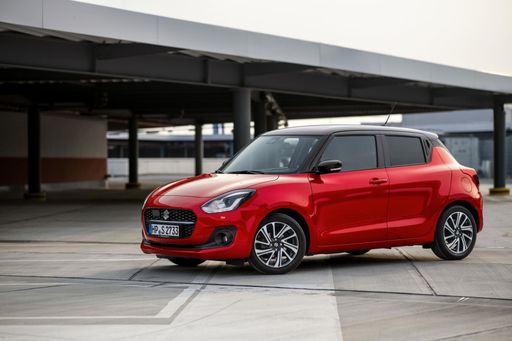 @ Suzuki Motor Corporation
@ Suzuki Motor Corporation
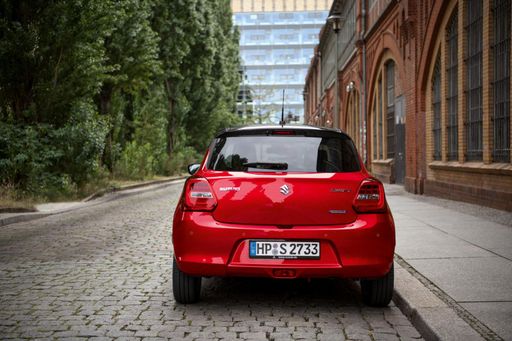 @ Suzuki Motor Corporation
@ Suzuki Motor Corporation
 @ Suzuki Motor Corporation
@ Suzuki Motor Corporation
 @ Hyundai Motor Company
@ Hyundai Motor Company
|
 @ Suzuki Motor Corporation
@ Suzuki Motor Corporation
|
|
|
|
Costs and Consumption |
|
|---|---|
|
Price
24000 - 29300 £
|
Price
17100 - 21200 £
|
|
Consumption L/100km
5.7 - 6 L
|
Consumption L/100km
4.4 - 4.9 L
|
|
Consumption kWh/100km
-
|
Consumption kWh/100km
-
|
|
Electric Range
-
|
Electric Range
-
|
|
Battery Capacity
-
|
Battery Capacity
-
|
|
co2
130 - 136 g/km
|
co2
98 - 110 g/km
|
|
Fuel tank capacity
50 L
|
Fuel tank capacity
37 L
|
Dimensions and Body |
|
|---|---|
|
Body Type
Hatchback
|
Body Type
Hatchback
|
|
Seats
5
|
Seats
5
|
|
Doors
5
|
Doors
5
|
|
Curb weight
1291 - 1407 kg
|
Curb weight
1069 - 1145 kg
|
|
Trunk capacity
395 L
|
Trunk capacity
265 L
|
|
Length
4340 mm
|
Length
3860 mm
|
|
Width
1795 mm
|
Width
1735 mm
|
|
Height
1455 mm
|
Height
1485 - 1510 mm
|
|
Max trunk capacity
1301 L
|
Max trunk capacity
980 L
|
|
Payload
463 - 509 kg
|
Payload
282 - 296 kg
|
Engine and Performance |
|
|---|---|
|
Engine Type
Petrol, Petrol MHEV
|
Engine Type
Petrol MHEV
|
|
Transmission
Manuel, Automatic
|
Transmission
Manuel, Automatic
|
|
Transmission Detail
Manual Gearbox, Dual-Clutch Automatic
|
Transmission Detail
Manual Gearbox, CVT
|
|
Drive Type
Front-Wheel Drive
|
Drive Type
Front-Wheel Drive, All-Wheel Drive
|
|
Power HP
100 - 140 HP
|
Power HP
82 HP
|
|
Acceleration 0-100km/h
9.6 - 13.1 s
|
Acceleration 0-100km/h
-
|
|
Max Speed
178 - 197 km/h
|
Max Speed
160 - 170 km/h
|
|
Torque
172 - 253 Nm
|
Torque
112 Nm
|
|
Number of Cylinders
3 - 4
|
Number of Cylinders
3
|
|
Power kW
74 - 103 kW
|
Power kW
61 kW
|
|
Engine capacity
998 - 1482 cm3
|
Engine capacity
1197 cm3
|
General |
|
|---|---|
|
Model Year
2024
|
Model Year
2024
|
|
CO2 Efficiency Class
D, E
|
CO2 Efficiency Class
C
|
|
Brand
Hyundai
|
Brand
Suzuki
|
What drive types are available for the Hyundai i30?
Available configurations include Front-Wheel Drive.
The prices and data displayed are estimates based on German list prices and may vary by country. This information is not legally binding.
